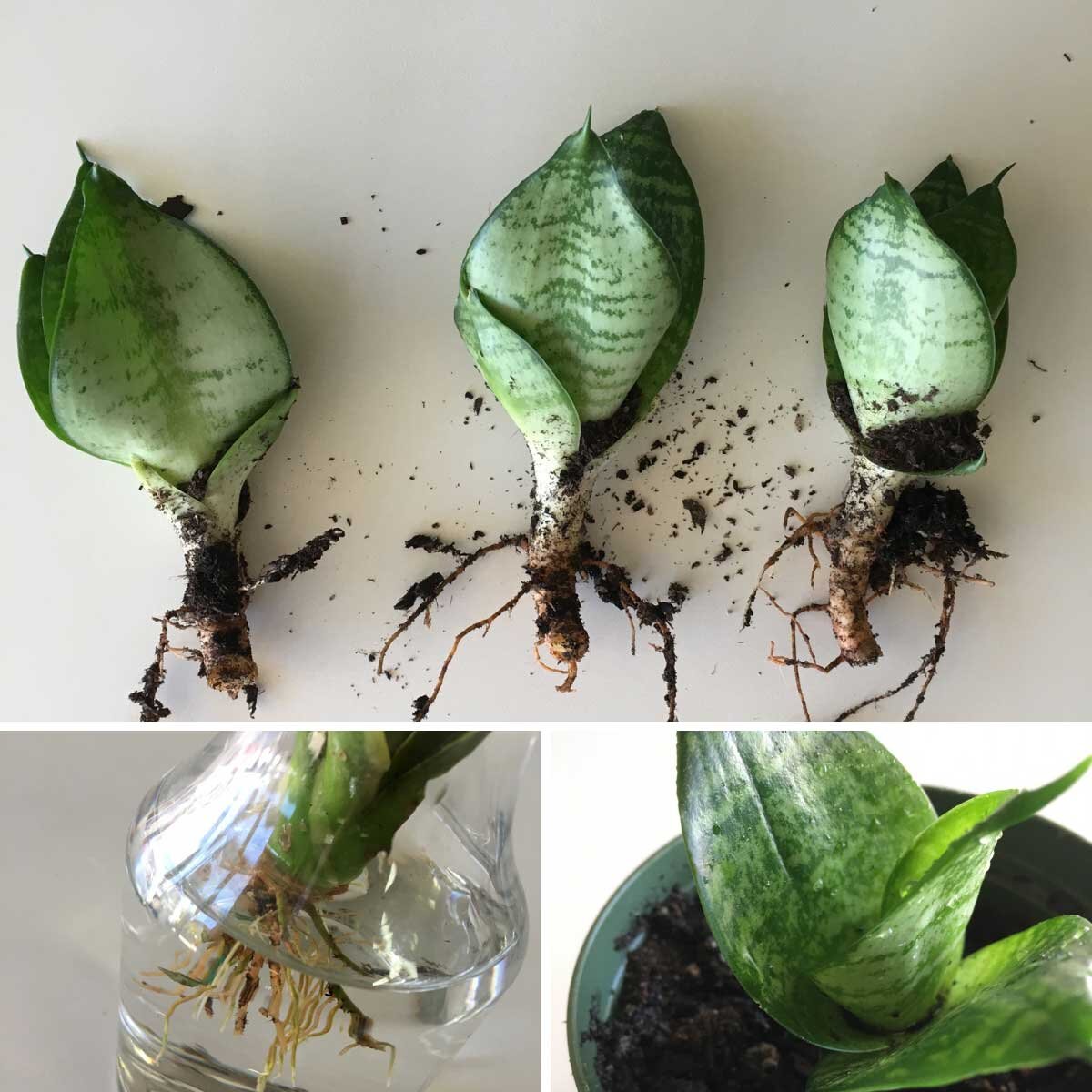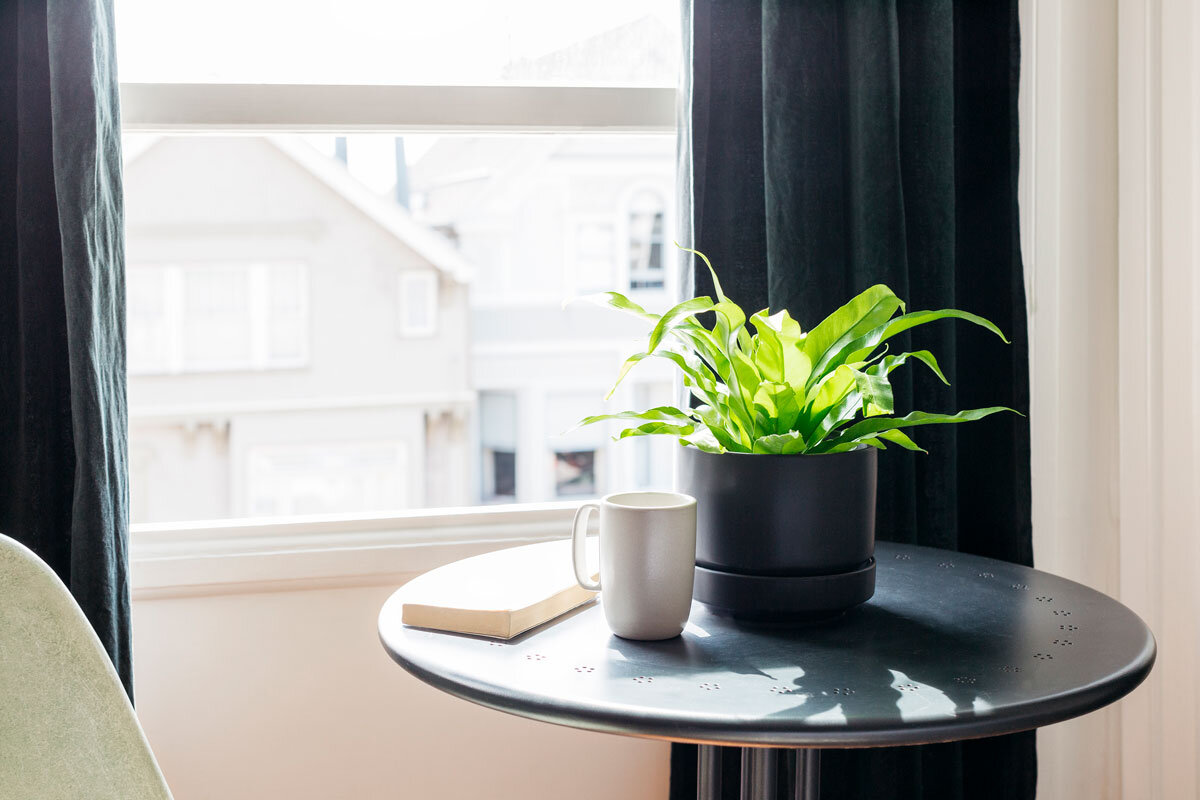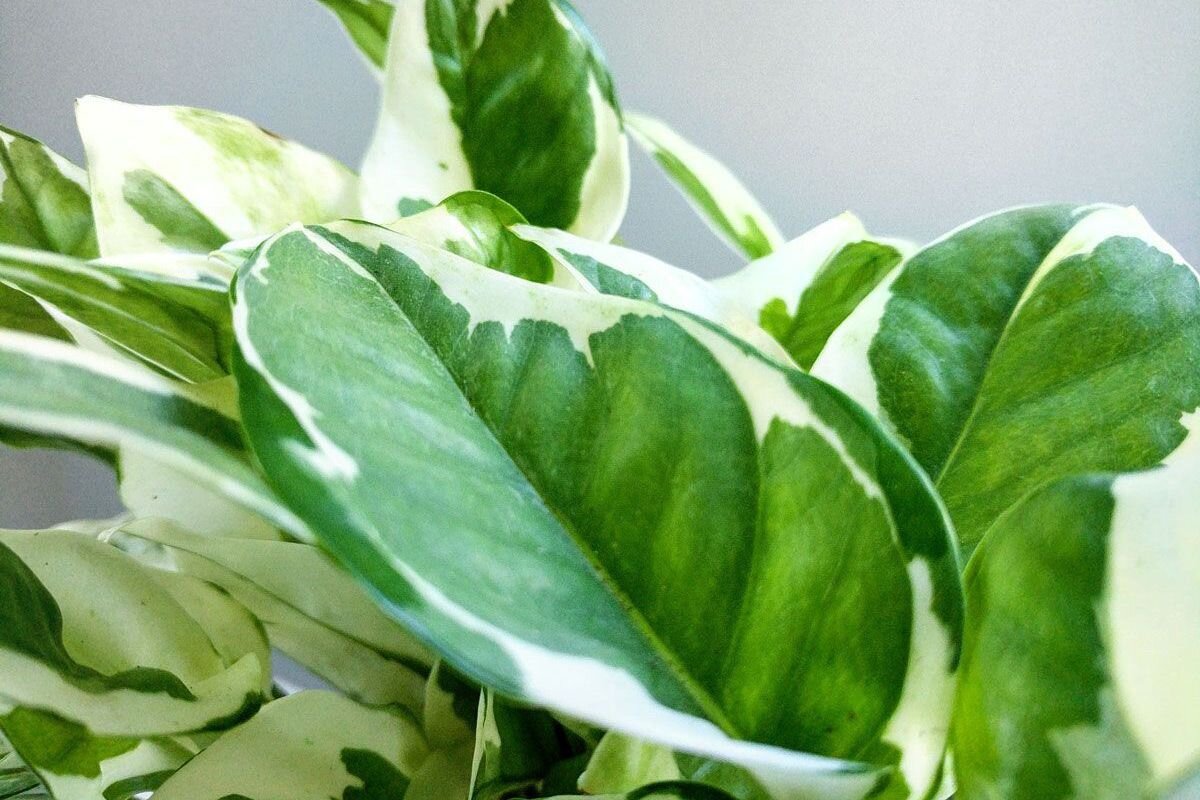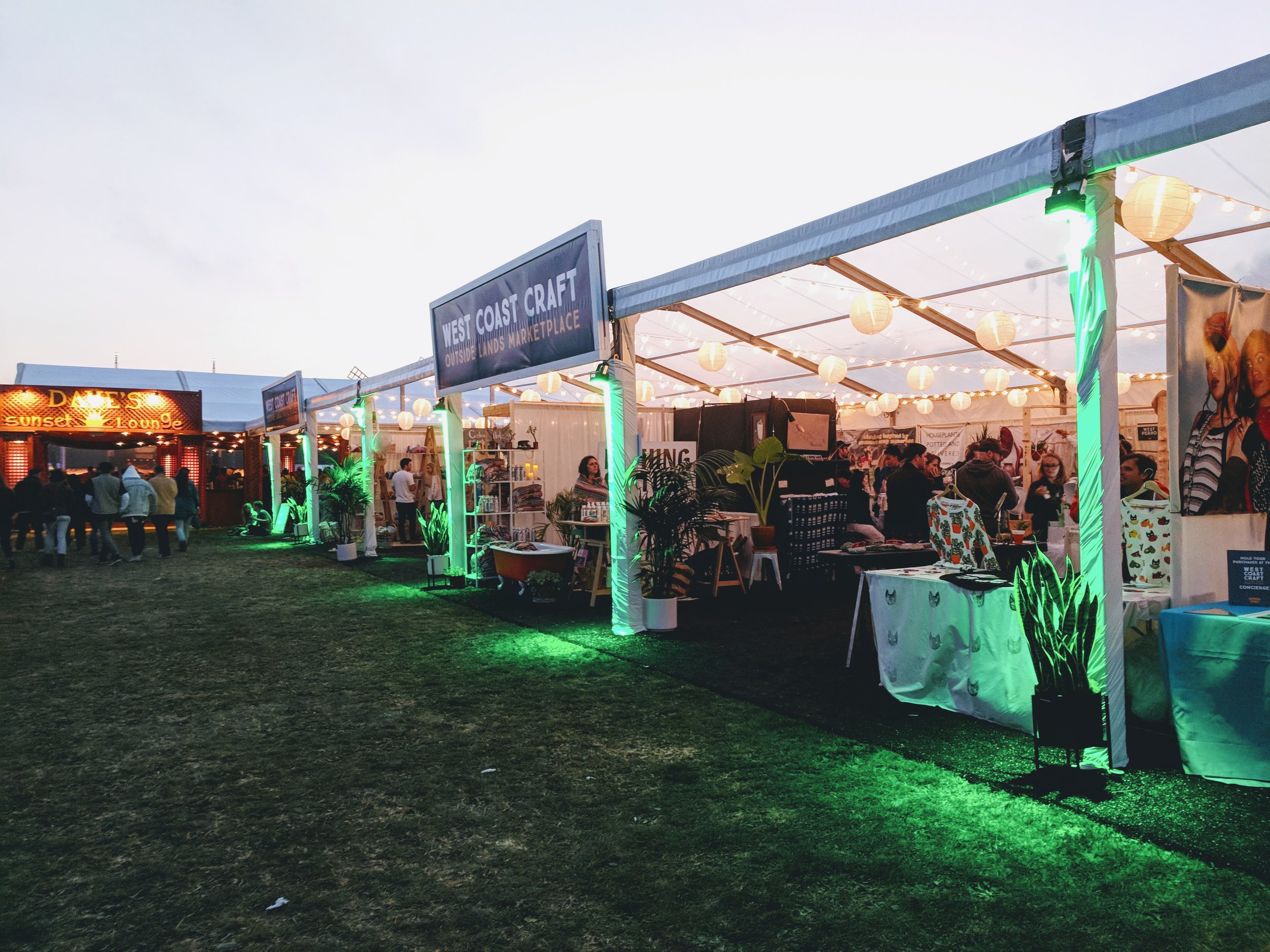Curious about how to propagate your plants?Plant propagation is incredibly simple with many indoor plants, and a fun way to create new accent plants for yourself or a friend. If you’ve never tried it before, read on to learn three simple ways to propagate your favorite plants, and join us for our Summer Solstice Cutting Swap with your newly learned skills!
How to propagate with Stem Cuttings
How to propagate a pothos in a few simple steps.
Propagating with stem cuttings is the most simple way to reproduce many common plants. Though you can place them directly in soil, many would argue that it’s easier to place them in water first (most likely because it’s impossible to forget to water them!). This method works well with plants like the Cascading Pothos, the Monstera Deliciosa, or prayer plants like the Magenta Triostar.
Step one: Using a clean blade, cut off a stem just below a node (the area on the stem where a new leaf, aerial root, or branch might grow).
Step two: Place the cutting in a small glass or jar with water. Make sure only the stem and node are submerged — do not submerge any leaves as they will rot (you may need to remove some leaves).
Step three: Place in an area with bright, indirect light and wait. You may like to change the water every few days to keep it fresh. After a week or two, you should see roots begin to sprout.
Step four: Once the roots have grown to about an inch long, carefully place them in a small pot with soil, gently pressing down on the soil once it’s potted. Keep the soil just moist to the touch for the first few weeks until the plant has taken root.
Tip: You may dip the cutting in rooting hormone to increase the chances of rooting before placing in water, but this is not absolutely necessary.
How to propagate with offsets
How to propagate the Pilea or Chinese Money Plant using offsets.
Some plants grow offsets (sometimes known as “pups”) just below the mother plant. These offsets are small leafy shoots that are capable of forming their own roots. Once these offsets have grown one or two inches in height, it’s very easy to cut them off and create new plants. The best plants to propagate with this method are the Pilea and succulents.
Step one: Using a clean blade, cut an offset at the base or closest to the soil as possible.
Step two: Place the stem in a small glass or jar with water. Make sure only the stem or shoot is submerged — do not submerge any leaves as they will rot (you may need to remove some leaves).
Step three: Place in an area with bright, indirect light and wait. You may like to change the water every few days to keep it fresh. After a week or two, you should see roots begin to sprout.
Step four: Once the roots have grown to about an inch long, carefully place them in a small pot with fresh soil, gently pressing down on the soil once it’s potted. Keep the soil just moist to the touch for the first few weeks until the plant has taken root.
How to propagate by division
How to propagate a snake plant by division.
Many plants are easily propagated through division, which is simply dividing the roots, tubers, or rhizomes from the parent plant. In most cases, you can simply get your hands a little dirty by working out the roots and separating different pieces. This method of propagation works for plants like the Snake Plant, Zanzibar Gem, and Desert Cactus.
Step one: Spread newspaper out on the floor (or go outside!) and remove the plant from its container. Gently begin untangling and splitting the roots — it’s okay if some break — and make sure each root structure has at least one piece of foliage on top.
Step two: Once you’ve divided the roots (this could be in two pieces or several!), place the newly separated plants in fresh soil and gently pat down soil so it is tightly compressed.
Step three: Place in an area with bright, indirect light and keep the soil just moist to the touch for the first few weeks, until the plant has taken root.
Tip: How do you know the plant has taken root? After a week or two, give the plant a gentle tug. It should feel anchored to its soil. If not, it has not yet taken root and is still slightly unstable.
Indoor plants, potted & delivered.
Premium plants paired with stylish ceramics, plus lifetime plant care support. Order online at www.leonandgeorge.com




























